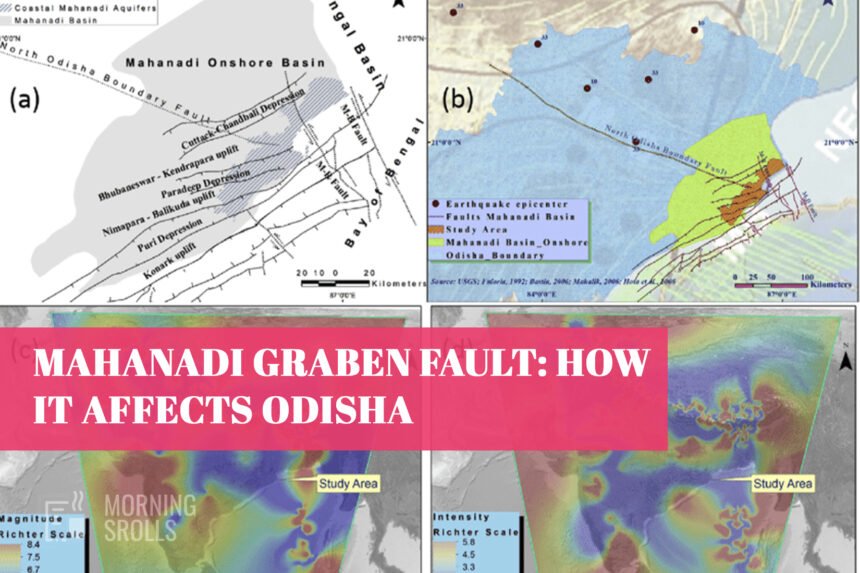A 5.1-magnitude earthquake hit near Odisha’s Puri district early Tuesday morning at 6:10 am, startling residents. The tremor, with its epicenter 91 km deep in the Bay of Bengal, was felt across coastal areas from Balasore to Paradip, including Bhubaneswar and Cuttack. Thankfully, there were no reports of damage or injuries, though many experienced brief but unsettling shaking.
To understand if Odisha could face more or stronger earthquakes in the future, we need to look at key factors like tectonic activity, especially the role of the Mahanadi Graben fault line.
Mahanadi Graben: A Deep Dive into Odisha’s Fault Line
The Mahanadi Graben is a natural fault line created by shifts in the Earth’s crust. It formed due to tectonic movements like rifting and sinking when the ancient supercontinent Gondwana broke apart millions of years ago.
Mahanadi Graben: Understanding Odisha’s Seismic Activity
The Mahanadi Graben is part of the larger Mahanadi Basin, stretching across land and sea along India’s eastern coast. This region is marked by cracks and faults in the Earth’s crust, making it an important zone for tectonic activity.
Underground faults in the Mahanadi coastal basin, along with those in the river valley areas, including Bhubaneswar and Cuttack, contribute to occasional tremors. Because of this, the Mahanadi River valley is classified as seismic zone III, meaning it faces a moderate risk of earthquakes.

Moderate Risk, Big Concerns: Odisha’s Earthquake Threat
Odisha falls under seismic zones II and III, meaning the earthquake risk is low to moderate. However, the Mahanadi Graben can trigger quakes up to magnitude 6.0, like the one recorded in the Bay of Bengal in 2014.
Though not as active as the Himalayas, its proximity to major cities like Bhubaneswar and Cuttack is a concern. Additionally, the thick sediments in the graben’s central zone can intensify shaking, increasing the risk of damage.
Why Does Odisha Experience Earthquakes?
Earthquakes in Odisha happen due to movements deep underground, where the Indian Plate and the Myanmar Microplate push against each other beneath the Bay of Bengal. Additionally, hidden cracks and faults in the Mahanadi Basin, including those near the coast and river valleys, increase the chances of tremors.
Although major earthquakes are uncommon in Odisha, experts stress the importance of being prepared. Keeping track of fault movements and spreading awareness can help reduce risks. Researchers are continuously studying geological data and past earthquakes to better understand and predict future threats.
Also Read – 5.1 Magnitude Quake in the Bay of Bengal Causes Tremors in Kolkata and West Bengal










